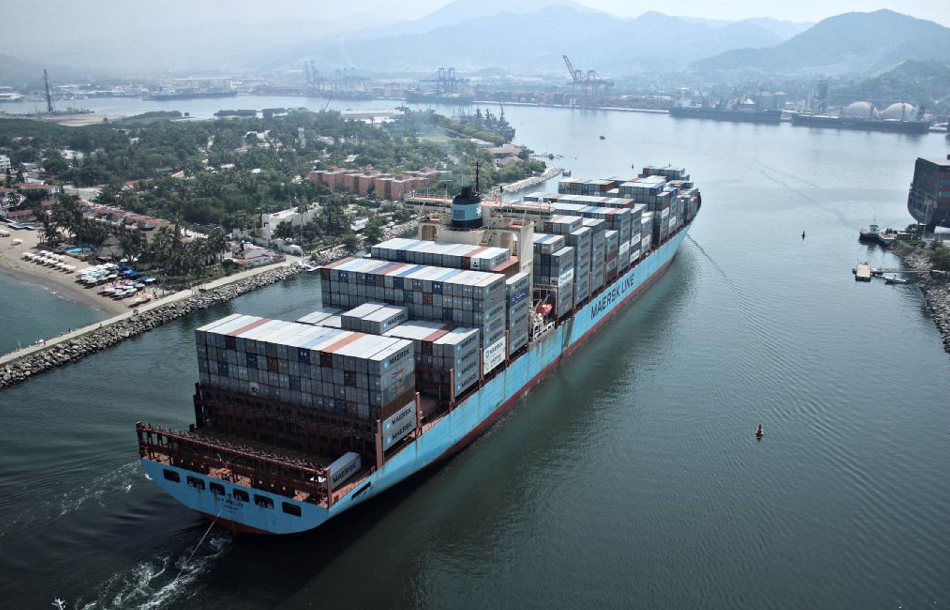
Maersk and IBM launch blockchain-based cross-border supply chain solution

IBM and the shipping and logistics giant Maersk have announced they are working together “to use blockchain technology to help transform the global, cross-border supply chain”. In a statement issued on Sunday (5 March), IBM said: “The blockchain solution based on the Hyperledger Fabric and built by IBM and Maersk, the global leader in transport and logistics, will be made available to the shipping and logistics industry.
“The solution will help manage and track the paper trail of tens of millions of shipping containers across the world by digitizing the supply chain process from end-to-end to enhance transparency and the highly secure sharing of information among trading partners. When adopted at scale, the solution has the potential to save the industry billions of dollars.”
Around 90% of goods traded globally are carried by ocean-going ships.
IBM and Maersk said they intend to work with ” network of shippers, freight forwarders, ocean carriers, ports and customs authorities”to build a new “global trade digitization solution”, which they expect will go into production later this year.
According to IBM, such a solution “has the potential to vastly reduce the cost and complexity of trading by using blockchain technology to establish transparency among parties”.
“The solution is designed to help reduce fraud and errors, reduce the time products spend in the transit and shipping process, improve inventory management and ultimately reduce waste and cost,” said IBM. “Maersk found in 2014 that just a simple shipment of refrigerated goods from East Africa to Europe can go through nearly 30 people and organizations, including more than 200 different interactions and communications among them.”
Thus far, blockchain technology has mostly attracted attention because its association with “bitcoin” digital currency – but IMB, and other technology companies, believe that its potential could extend much further.
A blockchain is a distributed database that maintains a continuously growing list of ordered records (or “blocks”). Each block contains a timestamp and a link to a previous block – so you can build an accurate, security record of transactions.
In yesterday’s statement, IBM explained how this would work in the context of a supply chain solution:
- “Each participant in a supply chain ecosystem can view the progress of goods through the supply chain, understanding where a container is in transit. They can also see the status of customs documents, or view bills of lading and other data.
- “Detailed visibility of the container’s progress through the supply chain is enhanced with the real time exchange of original supply chain events and documents.
- “No one party can modify, delete or even append any record without the consensus from others on the network.
- “This level of transparency helps reduce fraud and errors, reduce the time products spend in the transit and shipping process, improve inventory management and ultimately reduce waste and cost.”
The end result, said IBM, is a system that enables the “real time exchange of original supply chain events and documents through a digital infrastructure, or data pipeline, that connects the participants in a supply chain ecosystem”.
Bridget van Kralingen, senior vice president, Industry Platforms, IBM, commented: “We believe that this new supply chain solution will be a transformative technology with the potential to completely disrupt and change the way global trade is done.
“Working closely with Maersk for years, we’ve long understood the challenges facing the supply chain and logistics industry and quickly recognized the opportunity for blockchain to potentially provide massive savings when used broadly across the ocean shipping industry ecosystem. Bringing together our collective expertise, we created a new model the industry will be able to use to help improve the transparency and efficiency of delivering goods around the globe.”












